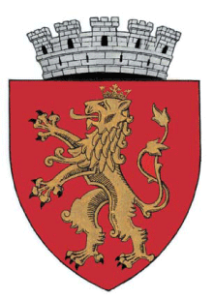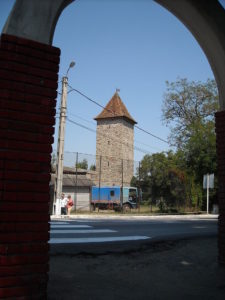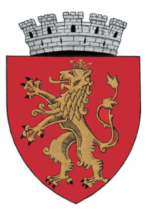Szászsebes

Szászsebes (Sebes, Sebesul Săsesc, Mühlbach, Melnbach) is a Saxon settlement 14 km from Gyulafehérvár (Alba Iulia) to the east. It is in Transylvania, Romania, on the bank of the River Sebes which is separating the Szászsebesi (Oláhpiáni) and the Szerdahelyi Mountains. The place is famous for its Saxon fortified church.

The German name of the place derived from the river’s name, meaning “mill-stream”. It was first mentioned in 1150 as -“Sebes” (meaning “rapid” in the Hungarian language) which was counted as a district of the Hungarian Székely people (terra Siculorum terrae Sebus) and it was mentioned as a city in 1245, as Malembach. Here are the names how it was called later: Sebus (1300), Sebz and Mulnbach (1309), Sceps sive Mulunak (1317 -1320), Mylenbachés Mylunbach (1334), Milundbak (1345), Mulbach (1349), Milumbaz (1369), Mülnbach (1376), Sebus Maior (1382), Sebes (1402), Zazsebes (1435), Willenbach (1608), Sebisá (1808 in Romanian).

The town was populated as early as the Roman Age. The Goth and Hun tribes were followed by the Avar, Slav tribes. After the coming of the Magyar (= Hungarian) tribes, the Székelys settled there, building the first church in the settlement. Szászsebes and its area were populated by the Székelys only from the first part of the 12th century, they gave the German name of the main street which is called Siculorumgasse. In the middle of the century, the Székelys moved to the area of Sepsiszék. The name “Sepsi” comes from the name of their previous settlement, Sebes.

The Saxons were settled there during the reign of King Géza II (1129-1162), mainly between 1158-1200. Here is more about the German Saxons of Transylvania:
https://www.hungarianottomanwars.com/essays/who-were-the-german-saxons-in-transylvania/
The small town was prospering quickly and King András II gifted it to the local Saxon people in his document called Andreanum in 1224. It was the document that granted lands and privileges to the Saxons, regulating their settlement. King András II was the one who moved the Székelys from there to the Háromszéki Basin.

The settlement and its wooden fort were wiped out by the Mongols in 1241, though. Szászsebesszék (“szék” stands for “seat”) was first mentioned in 1303, it had 10 villages back then. It was a free royal town in 1345. We can find a school there as early as 1352, perhaps launched by the Dominican monks. According to a list from 1376, there were 19 guilds and 25 types of crafts existing in the city and this data ranked the town as the third most important town of Transylvania at that time.

Later, the Saxons fortified it which was allowed them in the document of the Hungarian king in 1387. The reason for this construction was the imminent Turk peril. The walls of the castle reached down to the Sebes River, with gate towers on the western and the northern sides. There were more towers where the walls met; the Csizmadia (Boot-maker) tower stood on the north-west, there was another multi-angular tower on the north-east, the Szabó (Tailor) or Deák (Scribe) tower stood on the south-east and there was one at the riverside, too.

All these fortifications had been intact until the mid-19th century when most of them were pulled down. After the Battle of Nikápoly (Nicopolis), in 1396, King Zsigmond gave the town to his generals called Mihály and Salamon. Sultan Murad II besieged the castle in 1438 and after a short resistance, the town surrendered to the Ottomans, trusting in the words of the Wallachian Voivode Vlad Dracul. They should not have done so because Vlad did not keep his word. Thus, the surviving defenders took themselves in the Szabó Tower but the Turks set it on fire above them. The defenders charged out because of the smoke and were slaughtered or captured.
The Ottomans set the castle on fire again in 1442 and the next Turk attack came in 1479 when Bey Ali Kodzsa sacked the town.
The first mention of the Wallachian settlers was in 1531, their suburban town was located on the left bank of the Sebes River. Szászsebes was the place where King Szapolyai János died on 21 July 1540. Some gossip says he was poisoned by his doctor. (Please, note I use the Eastern name order for Hungarians where family names come first.)

The Saxons of the town embraced the Lutheran faith in 1542. The Székely army of Kemény János defeated the Moldavians in the Battle of Szászsebes on 13 November 1550. A year later, the city was the location where the peace talks began about the ceding of Transylvania between Nádasdy Tamás who represented the Habsburg king and Queen Isabella (late King János` widow) whose advisor was the statesman Fráter György ( aka Martinuzzi). Soon, Martinuzzi made Isabella cede her power in favor of her son, János Zsigmond.

Then, King Habsburg Ferdinand’s general, Castaldo took the town and it was Petrovics Péter in 1556 who could take the city back for the followers of Isabella and János Zsigmond. The Diet of Szászsebes was held in that year and Isabella was restored to her rights and Bishop Bornemissza Pál, her enemy was banned out from Transylvania. Isabella’s son, Prince (or elected king) János Zsigmond wanted to make this city his headquarters, and the next Diet in 1571 decided about the reinforcement of the castle. There were two more Diets there, in 1597 and in 1659.

The town boasted a Lutheran and a Reformed school in the 16th century. It was the first time when Orthodox Old-Slav Rituals were printed as early as 1580. Later, there was an Orthodox printing house between 1683-87, too. After the failure of Prince Rákóczi György II`s Polish campaign, the Turks broke into the Principality and Szászsebes had to pay lots of money to the Ottomans in 1658 to avoid being destroyed. Yet, it was burned in 1661 by Pasha Ali.

The town was occupied by the Kuruc forces of Prince Rákóczi Ferenc II of Transylvania in 1708 but soon after it was burned by the Imperial troops. Due to the wars, the number of inhabitants has been decreased and new settlers were brought in from Austria in the mid-18th century.

Here is a nice video about the old buildings of the town:
https://www.youtube.com/watch?v=izlvt1sMOTg
and here is a similar one:
https://www.youtube.com/watch?v=Tq0aQ6Lb8MI
Dear Readers, I can only make this content available through small donations or by selling my books or T-shirts.
If you like my writings, please feel free to support me with a coffee here:
You can check out my books on Amazon or Draft2Digital, they are available in hardcover, paperback, or ebook:
https://www.amazon.com/dp/198020490X or at https://books2read.com/b/boYd81

My work can also be followed and supported on Patreon: Become a Patron!http://Become a Patron!

https://hungarianottomanwars.myspreadshop.com/all
Here are the pictures of Szászsebes:



















